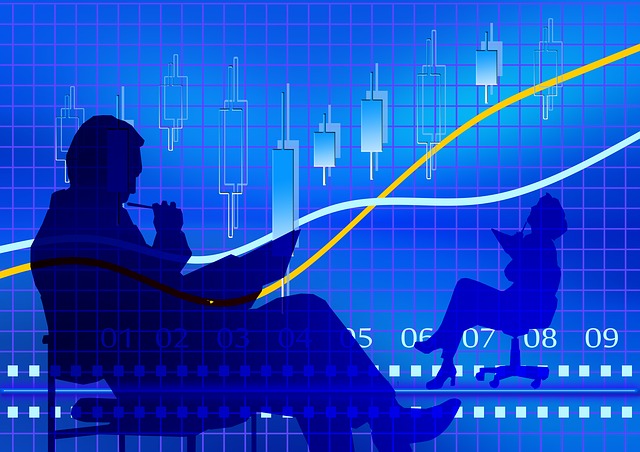A big part of understanding any market is knowing who the market participants are and getting a handle on the structure of the market. The Forex market is the largest market by cash volume in the world, with approximately $4 trillion worth of currency changing hands every day. Unlike regulated stock markets which trade in shares of public companies, the Forex market is not centralized, and it is best to think of it as a series of fountains or a wedding cake, with the most important participants at the top, with trades cascading down. The largest participants get the best terms and can move the market with their trades, although as the market is so big, it is difficult for any entity to manipulate. Working in order of size from the top down, the Forex field looks like this.
Central Banks
Central banks are national banks, in charge of issuing and lending the national currency. They are at the very top of the “food chain”. The usually also set monetary policy such as interest rates, and can increase or reduce the supply of their currency. They also usually have enormous reserves of other currencies and stores of value such as gold bullion. This means that they have several powers which when exercised can move the market in their currency dramatically. Probably the best example of this occurred in 2015 when the Swiss National Bank announced a surprise removal of the Swiss Franc’s peg to the Euro, which had the effect of moving that exchange rate by up to 30% in some quotes. Central banks often have policy aims, whether officially stated or not, of preserving their currency’s relative value within certain bands, and they will implement such policies by intervening in the Forex market when the band’s limits are threatened. Note that they are not universally successful: the Bank of England unsuccessfully tried to hold up the value of the British Pound against the German Deutschmark in 1992, but were forced to abandon their attempt after spending more than a billion Pounds in the market. It is much easier for central banks to devalue their currency than it is for them to maintain or increase a value. Central banks also have a role in lending and providing liquidity to the largest banks which serve their nations. If these large banks get in trouble, it is the central bank which must intervene to clean up any mess.
Banks
Most of the market volume is traded in the interbank market, i.e. between banks. Banks trade for both themselves and for their clients, which will be listed further down the chain below. The interbank market is dominated by the “big four”: by volume, this is Citibank at 12.9%, JP Morgan and HSBC at 8.8% each, and Deutsche Bank at 7.9%. Banks trade for themselves both as a speculative venture (although the size of this business is decreasing) and to build their own inventory of currency, as well as acting as a dealer to large, professional market participants. As dealer, banks make their profit from the bid/ask spreads which they impose on exchange rates quoted to their clients. 
Investment Managers and Hedge Funds
The biggest customers of the banks are speculative hedge funds and manager of other investment vehicles. They may want to exchange currencies either to finance purchases of securities denominated in currencies which they do not own, hedge against a risk in future fluctuations in currency exchange rates which could adversely affect their portfolios of securities, or simply to speculate upon such fluctuations for profit. While hedge funds trade in very large volume and get a lot of publicity, the pension fund industry accounts for a larger total of assets under management. However, as their trading style tends to be more conservative, it is the hedge funds as bigger risk-takers which tend to have a bigger influence upon the Forex market.
Corporations
Corporations, like investment managers and hedge funds, also deal with banks. Larger corporations tend to deal with the larger banks directly, while smaller businesses will work with smaller banks. Forex brokers are corporations and fit in this niche in the chain of dealing. Many corporations are multinational or at least engage in international trade. Even if they do not, their profits may be exposed to the risk of fluctuations in currency exchange rates. For these several reasons, corporations need to make currency transactions, and are often at a market disadvantage because they are forced into the market: they cannot always pick and choose when they trade. For this reason, trading in Forex derivatives such as swaps and forwards is often engaged in by corporations as an effective way to hedge against such risks well in advance. Note that the total volume of Forex traded by corporations for business purposes is dwarfed by the amount traded by Investment managers and hedge funds for speculative purposes, although it could be argued that many investment managers are trading as hedgers rather than as speculators and so share some elements typically characteristic of corporations.
Retail Traders
Unfortunately, we are at the very bottom of the chain, trading on worse terms than every other actor listed above. We need retail Forex brokerages to trade, and these brokers may not even be hedging their risk on our trades. If they are, they will be usually use a bank for their Forex dealing, which in turn is probably using another bank, which may then finally have behind it one of the “big four” or tier 1 banks. At each level, the prices, spreads etc. will slowly worsen. So, who are the hundreds of thousands of people like us who trade Forex with retail brokers? According to survey results presented in 2014:
- About 70% male, 30% female. Proportion of women highest in Europe (41% female).
- Median age of 35 - relatively young.
- 35% in Europe, 40% in Asia, only 4% in USA.
- Americans have highest average deposit at over $6,000.
- Breakdown by region: Europe 35%, Asia 24%, Middle East 13%, South America 8%.
- 84% believe it is possible to make positive monthly returns, 30% do.
- Larger accounts tend to be more profitable.
